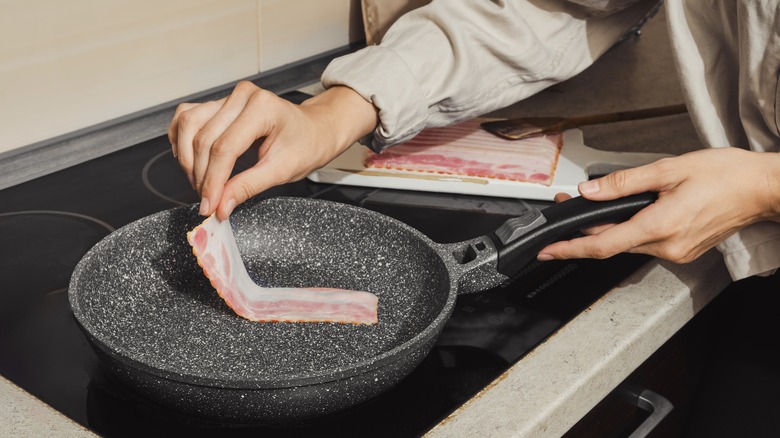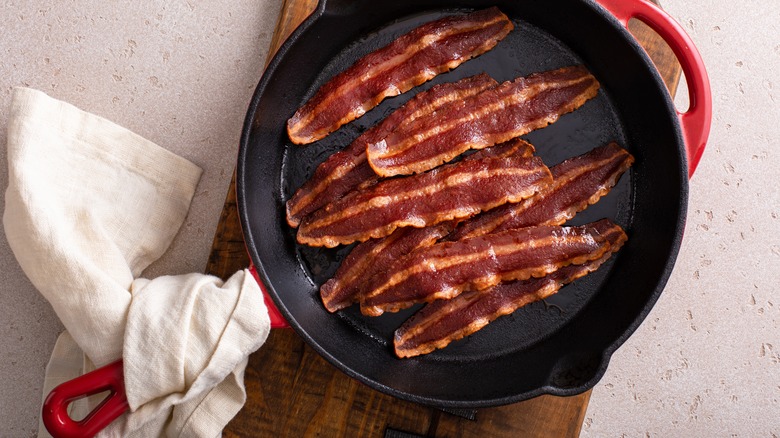Why It Pays To Start Your Bacon On A Cold Pan
There's no right or wrong way to love bacon. But there is a better way to cook it. While many experts suggest you bake your bacon in the oven, maybe you're a serial skillet user. If your usual routine in the past has been to toss a few strips into a preheated skillet and crank the heat, let's take a pause because the secret to evenly crispy, perfectly rendered bacon is to start it cold. As in: cold pan, cold bacon, tasty times.
Trust the science. Starting bacon in a cold pan might feel counterintuitive, especially if you grew up believing it was a sin not to preheat your cast iron pan. But the science (and the magic) is that when you gradually raise the heat, you give the fat time to render out slowly. That means less curling, fewer burnt ends, and way more golden, crispy deliciousness.
Bacon isn't just meat; it's meat and a lotta fat. The goal is to cook both parts evenly, and that only happens if the fat has time to melt out gently. Starting in a cold pan gives those fatty strips a chance to sweat a little. As the pan gradually heats, the fat melts slowly, coating the surface of the pan and essentially frying the bacon in its own rendered goodness. This process gives you that dreamy combo of a meaty, chewy center and crispy edges with nary a scorched spot or soggy middle in sight.
Less mess, fewer burns
We've all been betrayed by a rogue bacon grease pop. But when you start with a cold pan, the fat renders slowly and doesn't immediately start spitting at your forearms like it's Satan rising up from below. The gradual heat-up helps minimize grease splatter, which means less cleanup and fewer dramatic grease bubbles. Cold pan bacon works whether you're using a trusty cast iron skillet or your favorite nonstick pan. With cast iron, you get the added benefit of seasoning the skillet as you go — bacon fat is liquid gold for a well-loved pan. Of course, we here at The Takeout are almost always Team Cast Iron, but it's nice to have options.
So, the next time you're about to make bacon, skip the hot pan panic and embrace the cold start. Carefully lay those strips out in a single layer (try not to stretch them), turn the heat to medium-low, and let time do its thing. Flip occasionally, pour off excess fat if needed, and get ready for bacon that's crisp, evenly cooked, and absolutely worth the wait. You should have a nice pool of leftover bacon grease, so don't toss it. Carefully store it in a lidded glass jar and keep it in the fridge for up to three months. Use it for frying eggs, sautéing veggies, or use it in bacon shortbread cookies. Trust the cold. Your bacon — and your brunch guests — will thank you.

